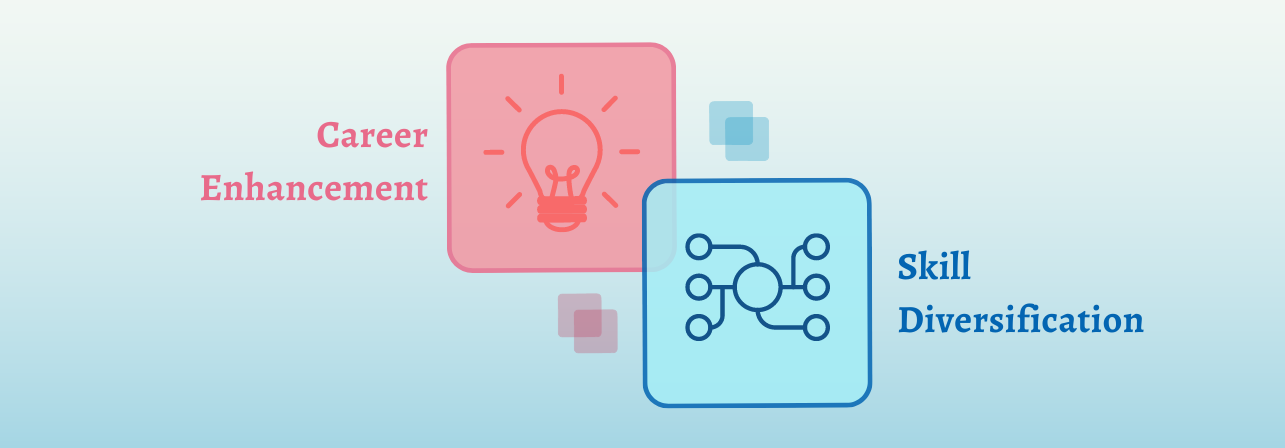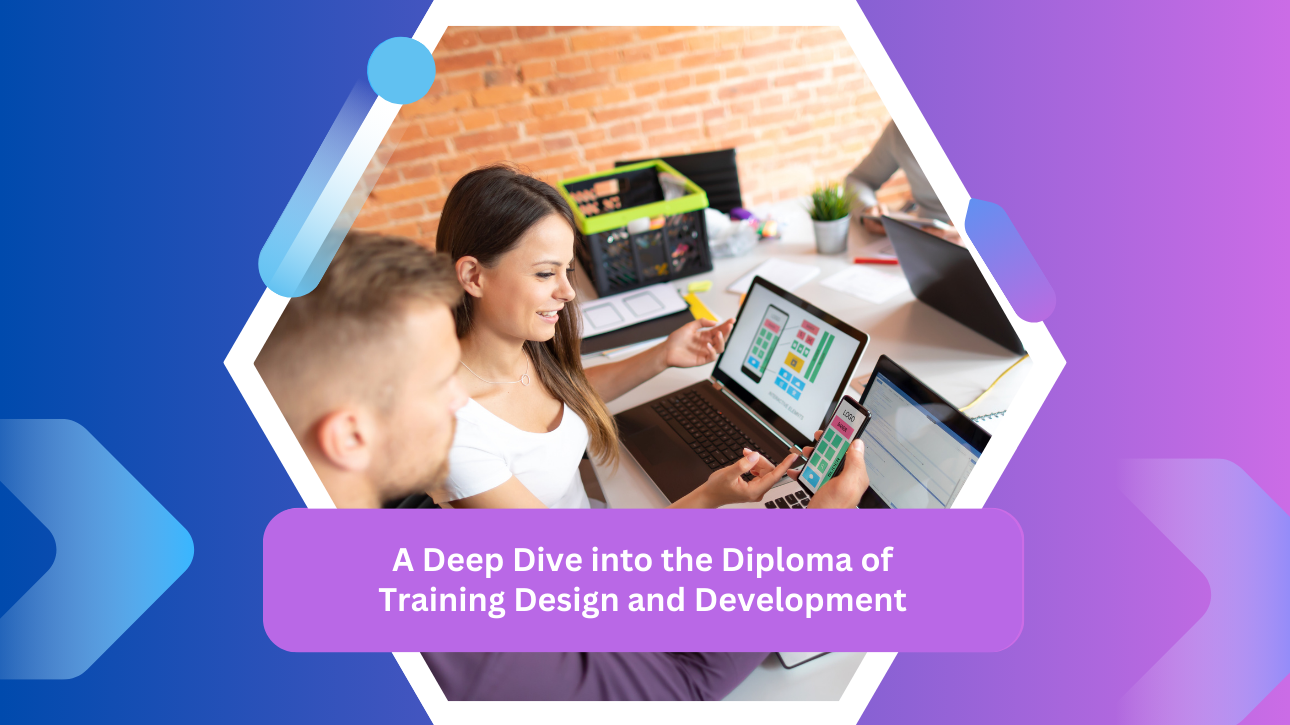Introduction
The Diploma of Training Design and Development is a key course for anyone looking to get ahead in the world of teaching and training. This diploma of training is perfect for those who want to be experts in training design and development. It teaches you how to figure out what kind of training people need, how to create great training plans, and how to make sure these plans work well. This course is not just about learning; it is about becoming a leader in private training providers and registered training organisations. You will learn to use new ways of teaching, like e-learning, and mix them with the best traditional methods.
Choosing this course of study opens many doors for your future. It is not just about getting better at training design and development; it is also about having more job choices. People who finish this course can work in different places like private RTOs, government departments, and schools. It is designed for those who already know a bit about training and want to help others learn too. This diploma helps you become a great leader, give advice to new trainers, and make learning plans that make a difference. It is more than just a certificate; it is a step towards becoming a top learning and development manager or a consultant in this exciting field.
Why the Diploma of Training Design and Development is a significant change
The Diploma of Training Design and Development is more than just a qualification; it is a key to unlocking a world of opportunities in the training sector. Here is why this diploma is a significant change:
Key Features:
- Innovative Course Structure: Combines traditional teaching methods with modern e-learning techniques.
- Focus on Real-World Skills: Emphasizes practical skills for analyzing and designing effective training programs.
- Leadership Development: Prepares you for leadership roles in training and development.
Impact on Career:
- Enhanced Job Opportunities: Opens doors to roles in private RTOs, government sectors, and educational institutions.
- Skill Advancement: Equips you with advanced skills in training design and development.
- Professional Growth: Positions you as a potential learning and development manager or consultant.
Table: Diploma Benefits at a Glance
| Benefit | Description |
| Career Advancement | This leads to higher positions in training and development. |
| Skill Enhancement | Improves abilities in training needs analysis and design and development. |
| Innovative Learning | Incorporates new teaching methods like e-learning. |
Overview of the Diploma of Training Design and Development
The Diploma of Training Design and Development offers a comprehensive understanding of the essential elements of training and development. This section provides an overview of what to expect from the course.
Key Components:
- Curriculum Focus: Emphasizes training needs analysis, design and development of training programs, and evaluating training effectiveness.
- Practical Application: Offers real-world scenarios to apply learning for immediate impact.
Why Study This Diploma:
- Real-World Relevance: Prepares you for actual challenges in the training sector.
- Comprehensive Skill Set: Develops a range of skills from organisational training needs analysis to effective program design.
Benefits of Studying Training Design and Development:

- Career Enhancement: Leads to roles like learning and development manager.
- Skill Diversification: Broadens your abilities in various aspects of training and development.
Table: Course Highlights
| Aspect | Details |
| Learning Approach | Blends theory with practical exercises. |
| Skill Development | Focuses on analysing training needs and developing effective programs. |
| Career Prospects | Opens pathways in both private and public sectors. |
Unit of Competency in the Diploma of Training Design and Development
The Diploma of Training Design and Development is structured around various units of competency, each designed to build specific skills and knowledge. Here is a breakdown of these units:
Core Units:
- Training Needs Analysis: Focuses on identifying and evaluating training requirements.
- Designing Training Solutions: Teaches how to create effective training programs.
- Developing Learning Resources: Covers the creation of engaging and informative learning materials.
- Evaluating Training Programs: Involves assessing the effectiveness and impact of training.
Table: Key Units of Competency
| Unit Title | Description |
| Analyzing Training Needs | Techniques for identifying training needs in an organization. |
| Designing Effective Programs | Strategies for creating impactful training solutions. |
| Resource Development | Skills for developing educational and training materials. |
| Program Evaluation | Methods for assessing the success of training initiatives. |

Career Opportunities Post-Diploma
Completing the Diploma of Training Design and Development opens a variety of career paths. This section outlines the potential job roles and opportunities available to graduates.
Career Paths:
- Learning and Development Manager: Oversee training programs within organizations.
- Training Consultant: Provide expert advice on training design and implementation.
- Instructional Designer: Create engaging and effective training materials and courses.
Table: Career Opportunities and Roles
| Job Role | Description |
| Training Manager | Manages and directs an organization’s training programs. |
| Vocational Education Trainer | Delivers vocational training in various settings. |
| RTO Training Coordinator | Coordinates training activities within a Registered Training Organisation. |
Success Stories:
- Case Studies: Highlighting graduates who have advanced in their careers post-diploma.
- Testimonials: Personal accounts from alumni about how the diploma enhanced their career.
Conclusion and Next Steps: Embrace Your Future in Training Design and Development
The Diploma of Training Design and Development is not just an educational journey; it is a pathway to a rewarding career in the dynamic field of training and development. Here, we wrap up the key benefits of the diploma and guide you towards taking the next step.
Key Takeaways:
- Holistic Education: The diploma offers a comprehensive curriculum in training design and development.
- Career Growth: Equips graduates with diverse roles in the training sector.
- Enhanced Skills: Enhances both practical and theoretical aspects of training design.
Call to Action: Explore VET Resources and Enroll Today
- Discover VET Resources: Learn more about the extensive resources and support offered by VET for students and professionals in training and development.
- Enrol in the Diploma: Take the first step towards enhancing your career by enrolling in the Diploma of Training Design and Development.
- Join Our Community: Connect with a network of professionals, alumni, and experts in the field.
Frequently Asked Questions (FAQs)
Q1. What is the focus of the Diploma of Training Design and Development?
- The Diploma focuses on analysing training needs, designing effective training solutions, developing learning resources, and evaluating the effectiveness of training programs. It is ideal for those involved in vocational education and training.
Q2. How does the Diploma of Training Design and Development differ from a Diploma of Vocational Education?
- While both focus on vocational training, the Diploma of Training Design and Development is more specialized in creating and evaluating training programs, whereas the Diploma of Vocational Education often covers a broader range of teaching skills.
Q3. Can my previous experience or studies be recognized in this diploma?
- Yes, recognition of prior learning (RPL) is available. This process assesses your previous learning and experience against the current course requirements.
Q4. How long does it take to complete the Diploma of Training Design and Development?
- The amount of time required typically ranges from one to two years, depending on whether you study full-time or part-time.
Q5. What is the ‘volume of learning’ in this diploma?
- The volume of learning includes all the teaching, learning activities, and assessment tasks that you are expected to complete as part of the course, typically involving around 8 hours per day of study.
Q6. Is there a unique student identifier required for this diploma?
- Yes, students need a unique student identifier (USI) to enrol and receive their qualification. This helps maintain your training records and results.
Q7. What career opportunities are available after completing this diploma?
- Graduates can pursue roles such as Learning and Development Managers, Training Consultants, or Instructional Designers in various sectors, including technical and further education, private RTOs, and government departments.
Q8. How is this diploma recognized under the Australian Qualification Framework?
- The Diploma of Training Design and Development is nationally recognized under the Australian Qualification Framework (AQF), ensuring it meets the high standards of education in Australia.
Q9. Can international students or Australian permanent residents enrol in this diploma?
- Yes, both international students and Australian permanent residents can enrol. However, international students should check specific visa requirements and course availability.
Q10. Are there any additional resources or reading materials required for this course?
- Students may need to access supplementary reading material, which can often be viewed using software like Adobe Acrobat Reader. These materials complement the core learning resources.
Disclaimer:
The information presented on the VET Resources blog is for general guidance only. While we strive for accuracy, we cannot guarantee the completeness or timeliness of the information. VET Resources is not responsible for any errors or omissions, or for the results obtained from the use of this information. Always consult a professional for advice tailored to your circumstances.






